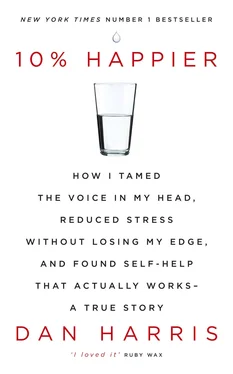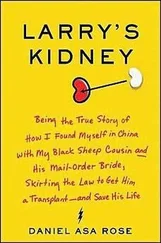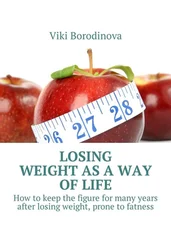Joseph always said that seeing the reality of suffering “inclines the mind toward liberation.” Maybe, but all the enlightenment talk continued to feel totally theoretical and unattainable—if not downright ridiculous. Here in the real world, people like me, who the Buddha called “unenlightened worldlings,” had to pursue happiness, as evanescent as it might be. As I hugged Mark good-bye and walked toward the subway, I confidently told myself that I was squeezing everything humanly possible out of the meditative superpower.
However, as I was about to learn, there were practical, down-to-earth applications I hadn’t even considered yet. They were being put into practice by people who would never wear shawls and dangly earrings, and for reasons that would both deeply impress me and fully put to rest any residual embarrassment I might have had about being a meditator.
Chapter 9
“The New Caffeine”
“Retarded.”
That was how Private First Class Jason Lindemann, a twenty-something with a high-and-tight haircut and a permanently amused look on his face, described his first impression of meditation. “The first time they had us do it,” he told me, “I thought, ‘Oh man, here we go.’ ”
PFC Lindemann and I were talking in a dusty corner of the sprawling Camp Pendleton marine base in Southern California. “So no part of you thought this could in any way be useful?” I asked.
With zero hesitation, he said, “No.”
Lindemann was an involuntary subject in a multimillion-dollar scientific study, requested by the marine corps brass. The military’s interest in a practice that was seemingly anathema to the world of warfare was fueled by an explosion of science. Forget the blood pressure study that had made me willing to try meditation in the first place; this new research was on the next level. It was creating some surprising converts—previously hardened skeptics who were now employing mindfulness in ways that would revolutionize my approach to work, and drive a stake through the heart of the assumption that meditation made you, “like, totally ineffective.”
On my travels to various Buddhist seminars, I had started to hear mentions of scientific research into meditation. It sounded promising, so I checked it out. What I found blew my mind. Meditation, once part of the counterculture, had now fully entered the scientific mainstream. It had been subjected to thousands of studies, suggesting an almost laughably long list of health benefits, including salutary effects on the following:
• major depression
• drug addiction
• binge eating
• smoking cessation
• stress among cancer patients
• loneliness among senior citizens
• ADHD
• asthma
• psoriasis
• irritable bowel syndrome
Studies also indicated that meditation reduced levels of stress hormones, boosted the immune system, made office workers more focused, and improved test scores on the GRE. Apparently mindfulness did everything short of making you able to talk to animals and bend spoons with your mind.
This research boom got its start with a Jew-Bu named Jon Kabat-Zinn, a Manhattan-raised, MIT-trained microbiologist who claimed to have had an elaborate epiphany—a “vision,” he called it—while on a retreat in 1979. The substance of the vision was that he could bring meditation to a much broader audience by stripping it of Buddhist metaphysics. Kabat-Zinn designed something called Mindfulness Based Stress Reduction (MBSR), an eight-week course that taught secularized meditation to tens of thousands of people around America and the world. Having a simple, replicable meditation protocol made it easy to test the effects on patients.
Things truly got sci-fi when researchers started peering directly into the brains of meditators. A blockbuster MRI study from Harvard found that people who took the eight-week MBSR course had thicker gray matter in the areas of the brain associated with selfawareness and compassion, while the regions associated with stress actually shrank. This study appeared to confirm the whole respond-not-react superpower. The regions where the gray matter shriveled were, evolutionarily speaking, the oldest parts of the human brain, which sit right atop the spinal column, and are home to our most basic instincts. (As one person has called it, these are the “want-it don’t-want-it, have-sex-with-it-or-kill-it” zones.) Conversely, the areas that grew were the newer parts of the brain, the prefrontal cortices, which evolved to help us regulate our primal urges.
Another study, out of Yale, looked at the part of the brain known as the default mode network (DMN), which is active when we’re lost in thought—ruminating about the past, projecting into the future, obsessing about ourselves. The researchers found meditators were not only deactivating this region while they were practicing, but also when they were not meditating. In other words, meditation created a new default mode. I could actually feel this happening with me. I noticed myself cultivating a sort of nostalgia for the present, developing the reflex to squelch pointless self-talk and simply notice whatever was going on around me: a blast of hot halitosis from a subway vent as I walked to work, the carpet of suburban lights seen from a landing airplane, rippling water reflecting sine waves of light onto the side of a boat while I was shooting a story in Virginia Beach. In moments where I was temporarily able to suspend my monkey mind and simply experience whatever was going on, I got just the smallest taste of the happiness I’d achieved while on retreat.
Even though scientists were quick to point out that the research was still in its embryonic stage, these studies had helped demolish neuroscientific dogma that had prevailed for generations. The old conventional wisdom was that once we reached adulthood, our brain stopped changing. This orthodoxy was now replaced with a new paradigm, called neuroplasticity. The brain, it turns out, is constantly changing in response to experience. It’s possible to sculpt your brain through meditation just as you build and tone your body through exercise—to grow your gray matter the way doing curls grows your bicep.
This idea contradicted widespread cultural assumptions about happiness that are reflected in the etymology of the word itself. The root hap means “luck,” as in hapless or haphazard . What the science was showing was that our levels of well-being, resilience, and impulse control were not simply God-given traits, our portion of which we had to accept as a fait accompli. The brain, the organ of experience, through which our entire lives are led, can be trained. Happiness is a skill.
Among the unlikely people for whom the science was creating some open-mindedness about meditation were two hard-driving and successful women who both loomed large in my psyche.
My mother—the original skeptic in my life, the debunker of God and Santa Claus—was very impressed by the Harvard study showing gray matter thickening in meditators. After reading about it online, she asked me to give her a meditation guidebook for Christmas. A few weeks later, she sent me an excited email saying that she had read the book and had decided, during a taxi ride to the airport, to give it a try. She was able to follow her breath all the way to the terminal without breaking her concentration. She then started sitting for thirty minutes a day, something that had taken me a year to achieve. The rough breakdown of my emotional response to this information was: 80% validated, 17% humbled, 3% resentful.
A few months later, on a visit to New York, both my parents spoke enthusiastically about how meditation had stopped my mom’s snoring. (When I asked by what mechanism this possibly could have been achieved, no thesis was proffered.) Despite the ebullience, my dad was still not meditating—and, like with my wife, I knew better than to push.
Читать дальше












